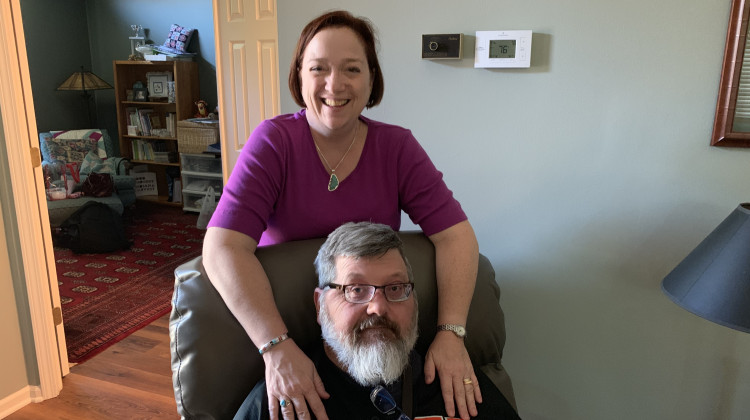Most of us take for granted the ability to recognize emotions on other people’s faces, or in the tone of their words.
But many people who suffer a traumatic brain injury also lose the ability to recognize emotions, even in people they’ve known for years. In Indiana, a new tool has been developed that can help.
Bill Dynes suffered a serious stroke in 2015. He’s a former theater professor, and when he first heard about the program to help restore his recognition of facial emotions, he didn’t think much of it.
"My first reaction was psst," says Dynes. "I’ve been a teacher for 30 years, I know all about reading people’s faces. I quickly figured out why."
Emotion recognition deficit affects up to 40 percent of people who suffer a traumatic brain injury. After the stroke, Dynes had to learn to walk again and regain the use of other motor skills. He says this was different.
"As we started the process, I didn’t realize it yet, but this was difficult," says Dynes, "I was shown photographs of the faces and asked to describe the emotion on that face, given a limited list of choices."
Dawn Neumann, a researcher at the Indiana University School of Medicine and the Rehabilitation Hospital of Indiana, developed the computer program Dynes is using.
Her previous work has focused on communication challenges people face when they can’t recognize emotions. She says even more people could be affected but providers don’t always screen.
"Sixty percent of them said they are rarely, to never evaluating these deficits," says Neumann.
Even if they did, there haven’t been any tools to help, until now.

Neumann’s program is administered by a therapist who uses the computer software that includes pictures of facial expressions. Patients are asked to identify what the expression is, exploring what the features look like, eyes squinted or open, mouth turned up or down – then it gets more detailed.
"Knowing how people with brain injury learn that each level gets increasingly more difficult," says Neumann. "So we're starting off on the easier side of things and then it gets increasingly more complicated."
The computer program moves on to an imitation stage, where a patient mimics the emotion, and then a recognition level, where the patient is asked to identify a time they may have experienced that emotion. The aim is to rebuild neural-connections and strengthen affected areas of the brain.
Based on positive trials, the training program was recently designated as a practice standard by a peer review group.
And it’s already in use in Indiana.
Elizabeth Strong is the outpatient therapy manager at the RHI’s Northwest Brain Injury Center.
She says after an injury, like a stroke, mobility issues are easy to recognize – emotion deficits are more nuanced.
"But if we think about how much we communicate non verbally and how that impacts our relationships, whether it's with your children, your spouse, your friends, your colleagues, the impact of that type of deficit is really profound," says Strong.
Strong has seen the benefits of emotion recognition restoration. One patient was able to cry again.
"She became tearful, as she talked about sad things," says Strong. "To help people to express their emotions is incredibly powerful."
There have been multiple patients who report having the ability to cry restored after intervention.
Bill Dynes and his wife Nancy, say it’s another emotion that’s been revived.
"We've realized here at home that he really had a lot of trouble when I was teasing him or not teasing him," says Bill Dynes.
Bill Dynes says after using the program, he gets it more and more.
"I think so. I’m learning when to duck," says Dynes. "I’m glad you laughed."
Neumann’s research is currently being used in a study of brain tumor patients.
She’s also hoping to land a federal grant to study the tool’s effectiveness through telemedicine.
Contact Jill at jsheridan@wfyi.org or follow her on Twitter at @JillASheridan.
 DONATE
DONATE








 Support WFYI. We can't do it without you.
Support WFYI. We can't do it without you.